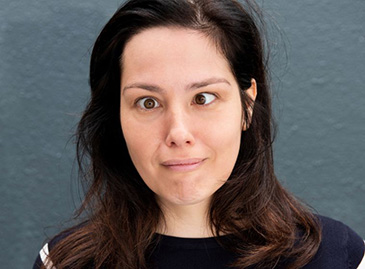Strabismus Surgery in Turkey
Strabismus, also called heterotropia or crossed eyes, is the medical term for eye misalignment. Usually, the muscles that control the movement of your eyes make your eyes move in the same direction. If you have strabismus, you may have difficulty controlling the movement of your eyes and keeping them in the same position.
We are with you throughout the entire process
You will find some useful information that will help you prepare the necessary organization to prevent all problems and make the necessary arrangements to ensure that everything goes smoothly during your stay in Turkey.
After our with doctor answers all your questions, doctor will explain to you how the operation process will proceed.
You will have a preliminary meeting with the doctor and team we work with before the operation.
Read the document we sent you before coming to Istanbul and be sure to follow the rules.
During the recovery process, our teams will call you, ask about your condition and ask for photos.

FAQ for Strabismus Surgery
You will find detailed information about the operation and organization you will need before coming to Turkey. You can contact your sales representative for any further questions.
- Strabismus surgery is a procedure to correct eye misalignment by adjusting the muscles controlling eye movement. It restores proper alignment, improves vision, and enhances appearance.
- Candidates include children and adults with persistent eye misalignment that cannot be corrected with glasses, eye exercises, or other treatments. A consultation with an ophthalmologist can determine eligibility.
- Recovery varies by individual, but most patients can resume normal activities within a few days.
- Strabismus surgery typically takes about 30 minutes to an hour, making it a quick and effective step toward better vision and alignment.
- The cost of strabismus surgery in Turkey varies depending on the procedure's complexity and the clinic, with many offering cost-effective, high-quality care.
Authorized by the Ministry of Health and Tourism in Turkey
Strabismus Surgery: An Effective Solution for Eye Misalignment
Strabismus surgery is a very good way to treat strabismus. It enhances appearance, depth perception, and vision. Since untreated strabismus can result in a variety of problems, including amblyopia (lazy eye), this operation is especially crucial for youngsters. For patients seeking affordable and high-quality care, the cost of strabismus surgery in Turkey is highly competitive, making it a popular destination for treatment.
Understanding Strabismus
The six muscles that surround each eye normally cooperate to keep them in the right position. Strabismus is a condition in which the eyes point in different directions due to a lack of coordination between these muscles. This misalignment can result in:
- Difficulty focusing.
- Double vision.
- Impaired depth perception.
In children, lazy eye is a condition where the brain learns to inhibit the image from the misaligned eye. Early diagnosis and treatment, including strabismus surgery, are crucial to prevent long-term vision problems.
Causes of Strabismus
Strabismus can affect both children and adults and may result from:
- Inherited Factors: Nearly 30% of children with strabismus have a family history of the condition.
- Neuromuscular Abnormalities: Issues with the brain's control centers or the eye muscles themselves.
- Associated Disorders: Conditions like cerebral palsy, Apert syndrome, or traumatic brain injury.
- Health Issues in Adults: Diseases such as diabetes, Graves’ disease, or eye injuries can lead to strabismus later in life.
Types of Strabismus
The condition is categorized into different types, with the most common being:
Accommodative Esotropia
- Caused by uncorrected farsightedness (hyperopia).
- Results in the inward turning of the eyes when focusing on close objects.
- Treatment includes glasses or contact lenses and, in severe cases, strabismus surgery.
Intermittent Exotropia
- Characterized by one eye drifting outward when looking at distant objects.
- Symptoms include double vision, headaches, and difficulty reading.
Diagnosing Strabismus
Strabismus is diagnosed through a thorough eye exam, including:
- Patient History: Evaluates family history and general health.
- Visual Acuity Tests: Measures how well the eyes focus.
- Alignment Tests: Examines how the eyes move and work together.
- Refraction Tests: Assesses how the eyes focus light.
For children over 4 months showing signs of misalignment, immediate evaluation is critical to avoid permanent vision damage.
Strabismus Surgery: Procedure and Benefits
Strabismus surgery is the most effective treatment for correcting eye misalignment. Here's what to expect:
Before Surgery:
- Patients are advised to fast several hours before the procedure.
- Any allergies or chronic medical issues must be disclosed to the surgeon.
During Surgery:
- The surgeon makes a small incision in the conjunctiva to access and adjust the eye muscles.
- The procedure may involve shortening or repositioning the muscles to correct alignment.
- Adjustable sutures may be used in some cases, allowing fine-tuning after surgery.
Recovery:
- Temporary redness, soreness, and mild swelling are normal and subside within weeks.
- Antibiotic drops or ointments are prescribed to prevent infection.
- Follow-up appointments are crucial to monitor healing and ensure proper alignment.
Benefits:
- Restores proper alignment and improves vision.
- Enhances depth perception and eliminates double vision.
- Corrects cosmetic concerns, boosting self-confidence.
Treatment Options Beyond Surgery
In addition to strabismus surgery, other treatments include:
- Glasses or Contact Lenses: Correct refractive errors that contribute to misalignment.
- Prism Lenses: Redirect light to reduce eye strain and improve focus.
- Eye Exercises: Strengthen eye muscles to improve coordination.
- Medications: Eye drops or botulinum toxin injections relax overactive muscles.
Costs of Strabismus Surgery in Turkey
One of the main benefits of looking for treatment in Turkey is the affordability of care. The cost of strabismus surgery in Turkey is significantly lower than in many Western countries. Factors influencing costs include:
- The complexity of the procedure.
- Pre-operative and post-operative care.
- Use of advanced techniques like adjustable sutures.
Turkish hospitals offer outstanding treatment thanks to their highly qualified surgeons and modern technology. Turkey is a desirable location for patients from abroad because of the abundance of clinics that provide all-inclusive packages that cover consultations, surgery, and aftercare.
Risks and Considerations
Like any surgical procedure, strabismus surgery carries some risks, including:
- Infection or reaction to anesthesia.
- Residual misalignment, which may require additional surgery.
However, These risks are uncommon and can be reduced with thorough preparation and following the guidelines before and after surgery.
Conclusion
Strabismus surgery is a life changing procedure that restores proper eye alignment, improves vision, and enhances quality of life. For children, early treatment prevents long-term complications, while adults benefit from better vision and appearance.
With its affordable cost of strabismus surgery in Turkey and access to advanced care, Turkey is a top choice for this procedure. If you or your child has strabismus, consulting an experienced ophthalmologist is the first step toward a brighter, clearer future.



